This is an old revision of this page, as edited by Nederlandse Leeuw (talk | contribs) at 17:24, 7 June 2023 (Moved from List of rulers of Estonia; it's more relevant here, where context can be explained.). The present address (URL) is a permanent link to this revision, which may differ significantly from the current revision.
Revision as of 17:24, 7 June 2023 by Nederlandse Leeuw (talk | contribs) (Moved from List of rulers of Estonia; it's more relevant here, where context can be explained.)(diff) ← Previous revision | Latest revision (diff) | Newer revision → (diff) Title given by the king of Denmark in 13th century
The first duke of Estonia (Template:Lang-da ) was appointed in 1220 by King Valdemar II of Denmark after the Danish conquest of Estonia during the Livonian crusade. The title was resumed by the kings of Denmark since 1269. During the 1266-82 reign of the queen dowager Margaret Sambiria, the title lady of Estonia (Template:Lang-la) was used.
In 1332, after Christopher II died, his second son Otto inherited the title of the duke of Estonia. Valdemar III assumed the title in 1338.
The dukes of Estonia rarely resided in Estonia. To govern the Duchy of Estonia, the king of Denmark and royal counsellors appointed the Lieutenant (Template:Lang-la), who resided in Reval.
The king of Denmark sold the duchy to the Teutonic Order in 1346, but Christian I reassumed the title of duke of Estonia in 1456.
After the Livonian War, Estonia became part of the Swedish Empire, and the title was gained by kings of Sweden. Crown Prince Gustav Adolph was already Duke of Estonia 1607-1611 before he became King, but then officially abolished all Swedish duchies in 1618.
The title was resumed by the Russian tsars after the Great Northern War and Treaty of Nystad when Estonia became part of the Russian Empire. The last duke of Estonia (Template:Lang-ru) was Nicholas II of Russia.
Danish dukes of Estonia
The Duchy of Estonia (1219–1346) was part of the Kingdom of Denmark, where the House of Estridsen reigned.
| Name | Portrait | Birth | Marriages | Death | |
|---|---|---|---|---|---|
| Canute I (Knud Valdemarsen ) 1220–1227 (deposed) |

|
1205 illegitimate son of Valdemar II of Denmark and Helena Guttormsdotter |
Hedwig of Pomerelia before 1260 two children |
1260 aged 55 | |
| Occupied by the Livonian Brothers of the Sword:1227-1237 | |||||
| Occupied by the Livonian Order of the Teutonic Order:1237-1238 | |||||
| Canute I (Knud Valdemarsen ) 1238–40 (restored) |

|
1205 illegitimate son of Valdemar II of Denmark and Helena Guttormsdotter |
Hedwig of Pomerelia before 1260 two children |
1260 aged 55 | |
| Valdemar I the Victorious (Valdemar Sejr) 1240–41 |

|
9 May/28 June 1170 second son of Valdemar I and Sophia of Minsk |
(1) Dagmar of Bohemia c. 1205 Lübeck one son (2) Berengaria of Portugal 18/24 May 1214 four children |
28 March 1241 Vordingborg Castle aged 70 | |
| Eric I Ploughpenny (Erik Plovpenning) 1241–50 |

|
c. 1216 eldest son of Valdemar I and Berengaria of Portugal |
Jutta of Saxony 17 November 1239 six children |
9 August 1250 on the Schlei aged 33–34 | |
| Abel 1 November 1250–1252 |

|
c. 1218 second son of Valdemar I and Berengaria of Portugal |
Matilda of Holstein 25 April 1237 Schleswig Cathedral four children |
29 June 1252 Eiderstedt aged 33–34 | |
| Christopher I (Christoffer 1.) 25 December 1252–1259 |

|
c. 1219 third son of Valdemar I and Berengaria of Portugal |
Margaret Sambiria c. 1248 five children |
29 May 1259 Ribe aged 39–40 | |
| Eric II Klipping (Erik Klipping) 1259–66 (abdicated) |

|
c. 1249 eldest son of Christopher I and Margaret Sambiria |
Agnes of Brandenburg 11 November 1273 Schleswig Cathedral seven children |
22 November 1286 Finderup aged 36–37 | |
| Margaret Sambiria (Margrethe Sambiria) 1266-1282 |

|
c. 1230 daughter of Sambor II of Pomerelia and Matilda of Mecklenburg |
Christopher I of Denmark c.1248 five children |
December 1282 Finderup aged 51–52 | |
| Eric II Klipping (Erik Klipping) 1282–86 (restored) |

|
c. 1249 eldest son of Christopher I and Margaret Sambiria |
Agnes of Brandenburg 11 November 1273 Schleswig Cathedral seven children |
22 November 1286 Finderup aged 36–37 | |
| Eric III Menved (Erik Menved) 1286–1319 |

|
c. 1274 eldest son of Eric II and Agnes of Brandenburg |
Ingeborg of Sweden June 1296 Kärnan Castle fourteen children |
13 November 1319 Roskilde aged 44–45 | |
| Christopher II (Christoffer 2.) 25 January 1320–26 (deposed) |
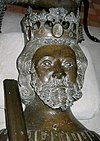
|
29 September 1276 second son of Eric II and Agnes of Brandenburg |
Euphemia of Pomerania c. 1300 six children |
2 August 1332 Nykøbing Castle aged 55 | |
| Eric (IV) (Erik Christoffersen) 1321-26 (deposed) |

|
c. 1307 eldest son of Christopher II and Euphemia of Pomerania |
Elizabeth of Holstein-Rendsburg 1330 no issue |
early 1332 aged c. 25 | |
| Valdemar II (Valdemar 3.) 1326–1329 (deposed) |
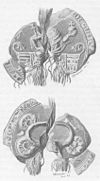
|
c. 1314 only son of Eric II, Duke of Schleswig and Adelaide of Holstein |
Richardis of Schwerin two sons |
c. 1364 aged 49–50 | |
| Canute II Porse (Knud Pedersen Porse) (House of Porse) 1329–30 (elected) |

|
c.1282 Son of Peter Knudsen Porse |
Ingeborg of Norway 21 June 1327 three children |
30 May 1330 Copenhagen aged 47–48 | |
| Ingeborg of Norway (Ingibjörg Hákonardóttir) 1329–32 (co-ruler) |
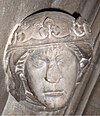
|
1301 daughter of Haakon V of Norway and Euphemia of Rügen |
Eric, Duke of Södermanland 1312 Oslo two children Canute II Porse 21 June 1327 three children |
17 June 1361 aged 59–60 | |
| Otto (Otto Christoffersen) 1332-38 |

|
c. 1310 second son of Christopher II and Euphemia of Pomerania |
unmarried | after 1341 aged c. 31/32 | |
| Valdemar II (Valdemar 3.) 1338-40 (restored) |

|
c. 1314 only son of Eric II, Duke of Schleswig and Adelaide of Holstein |
Richardis of Schwerin two sons |
c. 1364 aged 49–50 | |
| Valdemar III Atterdag (Valdemar Atterdag) 21 June 1340–46 |
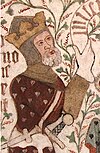
|
c. 1320 third son of Christopher II and Euphemia of Pomerania |
Helvig of Schleswig c. 1340 Sønderborg Castle six children |
24 October 1375 Gurre Castle aged 54–55 | |
In 1346, Northern Estonia is sold to the Livonian Order. This Order was already ruling Southern Estonia since 1237.
Swedish dukes of Estonia
The Duchy of Estonia (1561–1721) or Swedish Estonia was part of the Swedish Empire.
House of Vasa
| Name | Portrait | Birth | Marriage(s) | Death |
|---|---|---|---|---|
| Eric XIV (Erik XIV) 1561– 29 September 1568 |
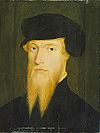 |
Tre Kronor (castle), 13 December 1533 son of Gustav I and Catherine of Saxe-Lauenburg | Karin Månsdotter | Died (Poisoned) while imprisoned in Örbyhus Castle, 26 February 1577. Aged 43, buried at Västerås Cathedral |
| John III (Johan III) 30 September 1568 – 17 November 1592 |
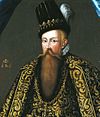 |
Stegeborg Castle, Östergötland, 20 December 1537 son of Gustav I and Margaret Leijonhufvud | Catherine Jagellonica (1562 – 1583), Gunilla Bielke (1585–1597) |
Tre Kronor (castle), 17 November 1592, aged 54, buried at Uppsala Cathedral |
| Sigmund (Sigismund) 17 November 1592 – 24 July 1599 |
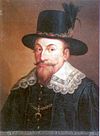 |
Gripsholm Castle, 20 June 1566, son of John III and Catherine Jagellonica of Poland. | Anna of Austria (1592–1598), Constance of Austria (1605–1631) |
Warsaw, Poland, 30 April 1632, aged 65, buried at Wawel Cathedral, Kraków, Poland |
| Charles IX (Karl IX) 22 March 1604 – 30 October 1611 also as regent Duke Charles, 1599–1604 |
 |
Tre Kronor (castle), 4 October 1550 son of Gustav I and Margaret Leijonhufvud | Maria of Palatinate-Simmern (1579–1589), Christina of Holstein-Gottorp (1592–1611) |
Nyköping Castle, 30 October 1611, aged 61, buried at Strängnäs Cathedral |
| Gustav II Adolph (Gustav II Adolf) 30 October 1611 – 6 November 1632 |
 |
Tre Kronor (castle), 9 December 1594, son of Charles IX and Christina of Holstein-Gottorp. | Maria Eleonora of Brandenburg | 6 November 1632, in the Battle of Lützen, Electorate of Saxony, aged 37, buried in Riddarholmen Church |
| Christina (Kristina) 6 November 1632 – 6 June 1654 |
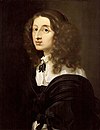 |
Stockholm, 8 December 1626, daughter of Gustavus Adolphus and Maria Eleonora of Brandenburg | Unmarried | Rome, 19 April 1689, aged 62, buried at St. Peter's Basilica, Vatican City |
House of Palatinate-Zweibrücken, a branch of the House of Wittelsbach
| Name | Portrait | Birth | Marriage(s) | Death |
|---|---|---|---|---|
| Charles X Gustav (Karl X Gustav) 6 June 1654 – 13 February 1660 |
 |
Nyköping Castle, 8 November 1622, son of John Casimir, Count Palatine of Zweibrücken-Kleeburg and Catharina of Sweden (daughter of Charles IX) | Hedwig Eleonora of Holstein-Gottorp | Gothenburg, 13 February 1660, aged 37, buried in Riddarholmen Church |
| Charles XI (Karl XI) 13 February 1660 – 5 April 1697 |
 |
Tre Kronor (castle), 24 November 1655 son of Charles X and Hedwig Eleonora of Holstein-Gottorp | Ulrike Eleonora of Denmark | Tre Kronor (castle), 5 April 1697, aged 41, buried in Riddarholmen Church |
| Charles XII (Karl XII) 5 April 1697 – 30 November 1718 |
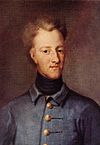 |
Tre Kronor (castle), 17 June 1682 son of Charles XI and Ulrika Eleonora the Elder | Unmarried | Fredrikshald, Norway, 30 November 1718, aged 36, buried in Riddarholmen Church |
| Ulrica Eleanor (Ulrika Eleonora) 5 December 1718 – 29 February 1720 |
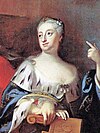 |
Tre Kronor (castle), 23 January 1688 daughter of Charles XI and Ulrika Eleonora the Elder | Frederick I, Landgrave of Hesse-Kassel | Stockholm, 24 November 1741, aged 53, buried in Riddarholmen Church |
House of Hesse
| Name | Portrait | Birth | Marriage(s) | Death |
|---|---|---|---|---|
| Frederick (Fredrik I av Hessen) 24 March 1720 – 10 September 1721 |
 |
Kassel, (in today's Germany), 23 April 1676 son of Charles I, Landgrave of Hesse-Kassel and Princess Maria Amalia of Courland | Louise Dorothea of Prussia Ulrika Eleonora of Sweden |
Stockholm, 25 March 1751, aged 74, buried in Riddarholmen Church |
On 10 September 1721, Sweden ceded Estonia to the Tsardom of Russia, in the Treaty of Nystad.
Governors during Swedish rule
- 1561–1562 Lars Ivarsson Fleming [de]
- 1562–1562 Henrik Klasson Horn
- 1562–1564 Svante Stensson Sture
- 1564–1565 Hermann Pedersson Fleming [de]
- 1565–1568 Henrik Klasson Horn
- 1568–1570 Gabriel Kristiernsson Oxenstierna [de]
- 1570–1572 Hans Björnsson Lejon [de]
- 1572–1574 Clas Åkesson Tott
- 1574–1575 Pontus de la Gardie
- 1576–1578 Karl Henriksson Horn [de]
- 1576–1577 Nilsson Hans Eriksson Finne
- 1577–1580 Göran Boije af Gennäs [de]
- 1580–1581 Svante Eriksson Stålarm [de]
- 1582–1583 Göran Boije af Gennäs (2nd time)
- 1583–1585 Pontus De la Gardie
- 1585–1588 Gustaf Gabrielsson Oxenstierna [de]
- 1588–1588 Hans Wachtmeister
- 1588–1590 Gustaf Axelsson Banér
- 1590–1592 Erik Gabrielsson Oxenstierna [de]
- 1592–1600 Göran Boije af Gennäs (3rd time)
- 1600–1601 Karl Henriksson Horn [de]
- 1601–1602 Moritz Stensson Leijonhufvud [de]
- 1605–1608 Axel Nilsson Ryning
- 1611–1617 Gabriel Bengtsson Oxenstierna
- 1617–1619 Anders Eriksson Hästehufvud
- 1619–1622 Jacob de la Gardie
- 1622–1626 Per Gustafsson Banér
- 1626–1628 Johan De la Gardie [de]
- 1628–1642 Philipp Scheiding [de]
- 1642–1646 Gustaf Gabrielsson Oxenstierna [de]
- 1646–1653 Erik Axelsson Oxenstierna [de]
- 1653–1655 Heinrich von Thurn-Valsassina [de]
- 1655–1656 Wilhelm Ulrich [de]
- 1656–1674 Bengt Klasson Horn [de]
- 1674–1681 Andreas Lennartson Torstensson
- 1681–1687 Robert Johannson Lichton
- 1687–1704 Axel Julius De la Gardie
- 1704–1706 Wolmar Anton von Schlippenbach
- 1706–1709 Niels Jonsson Stromberg af Clastorp
- 1709–1710 Carl Gustaf von Nieroth
References
- Also known as Duke of Estland or Prince of Estonia or Lord of Estonia
- ^ Skyum-Nielsen, Niels (1981). Danish Medieval History & Saxo Grammaticus. Museum Tusculanum Press. ISBN 978-87-88073-30-0.
- "Overture in Europe". estonica.org. Archived from the original on June 10, 2007. Retrieved 2008-10-05.
- Michael, Jones (2000). The New Cambridge Medieval History. ISBN 978-0-521-36290-0.
- Christiansen, Eric (1997). The Northern Crusades. Penguin. ISBN 978-0-14-026653-5.
Duke of Estonia.
- Moncure, James (1992). Research Guide to European Historical Biography. University of Michigan. ISBN 978-0-933833-28-9.
- Joubert, Carl (1905). Russia as it Really is. E. Nash. p. 296.
Duke of Estland.
- Note that the birth date is 8 December in the Julian calendar, which was in effect in Sweden at the time, corresponding to 18 December in the Gregorian calendar.